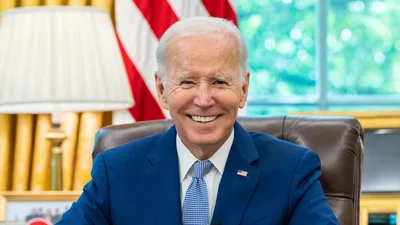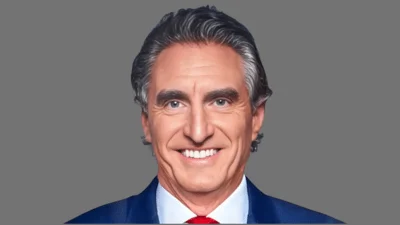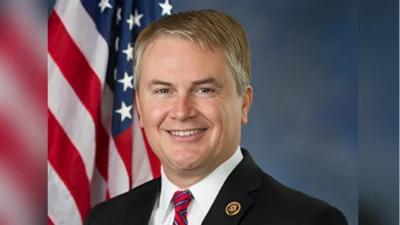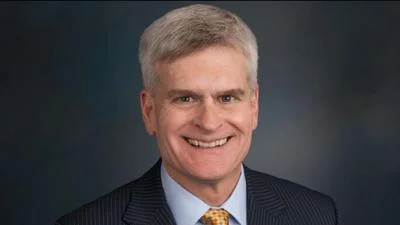WASHINGTON - This afternoon the U.S. Senate began consideration of legislation to stimulate the troubled economy. Sen. Chuck Grassley of Iowa led debate on the Republican side from his position as Ranking Member of the Committee on Finance.
A copy of Grassley’s opening floor statement follows.
-------------------------------
Mr. President, I rise to join the opening debate on the economic stimulus bill. Chairman Baucus and I shared a goal at the start of this process. We both wanted a bipartisan economic stimulus package that also addressed the unemployment benefits and health care needs of dislocated workers. I still have that goal.
Mr. President, my discussion this afternoon will be divided into three parts. First, I’d like to talk about the process for this bill. Secondly, I will talk about the substance, looking at similarities and differences in each caucus’ approach. And finally, I will talk about how we resolve these differences and get a bipartisan bill through the Senate.
Let’s turn to process first. Chairman Baucus rightly insisted that the Finance Committee act on this matter. As Ranking Member, the Chairman can always count on my support in respecting the jurisdiction of the committee.
Unfortunately, however, in asserting our jurisdiction, we did not operate in our bipartisan tradition.
Despite all the speeches to the contrary, the bill put forth in the Finance Committee was designed to be partisan.
That economic stimulus bill that passed out of the Finance Committee embodied the Democratic Caucus position on this issue. It was precooked and passed out of the Committee because Democrats decided to deal only with themselves. As unfortunate as that event was, it is now water under the bridge. What is equally unfortunate, however, is that the partisan acts of the Democrats in the Finance Committee have necessitated a confrontational debate from each side.
By choosing a partisan strategy, the Democratic Leadership has placed us in a position where, aside from the substantive issues involved, there is necessarily a partisan division. I point this out only because it is a needless barrier to my goal of a bipartisan stimulus package. Now, on the Senate floor, the Majority Leader does not have an unfettered right to push this bill through on a partisan basis. Because this bill violates the restrictions of the budget resolution, it is subject to a 60-vote point of order. So, too, by the way, would a Republican alternative. So, Mr. President, you can see we are in the position where neither side can win here.
Mr. President, I am frustrated and disappointed right now. There’s a lot of common ground, but little will on the Democratic Caucus’ part to meet our side halfway, or even part of the way. That unwillingness doesn’t make a lot of sense in a Senate that is divided 51-49.
So where is the common ground? Let’s start with the economic stimulus. Basically, the President and Chairman Greenspan gave a “Greenspan" green light to the stimulus exercise. Chairman Greenspan requested that we take a hard look at proposals that were temporary, immediate and efficient. Chairman Greenspan said we needed to pay particular attention to the decline in manufacturing investment. Here is a chart that shows what Chairman Greenspan was talking about. Democrats and Republicans agreed to pursue accelerated depreciation as a stimulus measure. Both caucus plans have this proposal in them, though the Democrats are at a very ineffective 10 percent and the Republicans are at 30 percent.
Both caucuses pursued proposals that while not as stimulative as accelerated depreciation, would still provide some much-needed relief to struggling businesses. Democrats proposed liberalizing the net operating loss carryback rules. Republicans proposed repealing the corporate AMT. Here again, there is room to work on a bipartisan agreement.
Republicans put on the table an acceleration of the income tax rate cuts put in place by the bipartisan tax relief bill passed earlier this year. The Democratic Leadership objects to the proposal because, even though this proposal is stimulative, it re-opened a statute that a majority of Democrats did not support.
I recognize that the acceleration is not viewed as common ground, but I’d ask a question. How could the Democrats re-open the statute by putting the rebates for payroll or non-taxpayers on the table. It appears to be a bit inconsistent, doesn’t it? To those of us on this side, it appears the Democratic Leadership has taken the positive gesture by the President on the rebates, but have not been flexible in return.
Needless to say, by default, both sides have common ground on the next round of rebate checks. This proposal stimulates consumer demand. Former Secretary Rubin was very keen on some modest level of consumer demand stimulus. So, on the investment side and consumer demand side, both Democrats and Republicans have proposals with similar features, with the Republicans placing more emphasis on investment.
But, the Democratic Leadership has made marginal rate cut acceleration a deal breaker.
We Republicans want to provide dislocated workers with assistance for coverage of health insurance.
First off, I want to clear up some misstatements. Some have incorrectly said Republican proposals do nothing to help cover the costs of health insurance for dislocated workers. That is baloney.
The President supported health care assistance by proposing funding for health care benefits to laid-off workers. Both the House bill and the Senate Republican caucus position embraced this idea. But in negotiations, I was willing to go beyond the President’s proposal. I offered to more than triple the amount of money. I also proposed expanding coverage of health benefits to dislocated workers who don’t qualify for COBRA, such as small business workers. I then offered the Democrats complete flexibility to write the criteria under which the money would be granted, so they could be confident in the program. How much more flexible can you be than that? But, the Democratic Leadership said no, and rejected my offer.
So, we have common ground on the goal of helping dislocated workers with health care benefits. Now,
are there differences in how we want to provide this assistance? The answer is yes. The whole point of this bill is to get people health care benefits right away. Yet the Democratic Leadership wants to create a new bureaucracy that would take many months to get up and running. The Democrats’ proposal would not be able to get benefits to workers until it’s too late. That’s because federal law requires that when a new federal program is established, regulations must be promulgated and the public be given notice and an opportunity to comment.
Clearly these laws affecting new programs are in place for good reason. But we can avoid this hurdle by using existing programs, especially ones that are tailor-made for national emergencies. That’s why the President took the approach he did through the National Emergency Grant Program.
Our goal was to use the existing National Emergency Grant program - one that the federal government and states have used for years - to ensure benefits can get to dislocated workers in the fastest possible way.
No new infrastructure would be required by the federal government, and states could quickly access much-needed funds.
The bottom line is that hard-working Americans who have lost their jobs as a result of the tragedy cannot wait six, nine or 12 months for health care insurance. They need help right now. We proposed to do just that, but the Democratic Leadership was not interested in any bipartisan compromises, even when they represented common sense.
The second problem with the Democratic health package is that it places undue burdens on states,
which are already struggling to respond to the adverse impacts of Sept. 11. Requiring a new federal infrastructure and corresponding new state infrastructures in order to access “emergency" funds seems to be downright unreasonable. We should be working our hardest to get money to states immediately. We should not penalize them by demanding that they, too, establish extensive new bureaucracies to get the money out the door.
For example, the Democrats’ proposal would require many states to enact legislation in order to set up and fund new state infrastructures to certify and deliver COBRA benefits. This is an unfunded mandate.
In addition, the Democrats’ proposal requires states to use their own money. This means only those states which happen to have extra money in their Medicaid budgets could help workers that are not COBRA eligible.
I’m not aware of any state claiming it has extra Medicaid money burning a hole in its pocket, and I think this is just plain wrong. I proposed to provide 100 percent federal funding through the National Emergency Grant program to allow states to cover non-COBRA eligibles. Once again, I ask the Democratic Leadership, why are you insisting on doing this the hard way, especially when there’s a much more efficient alternative?
Now let me make a few points on extending unemployment benefits to dislocated workers. We want to do more than just provide unemployment checks. We also want incentives to get workers back their paychecks. But, both sides agree that providing 13 weeks of additional benefits to workers in need is reasonable. The Democratic leadership, however, wants to take our finite resources and spread them thinly across every state, so that the needy will not get enough help.
I offered to provide unemployment benefits in two ways. The first was to allow 13 weeks of benefits to be extended to those states which experienced a significant increase in unemployment. What qualifies as a “significant increase," you may ask? I was completely flexible on that point. In fact, I was more than willing to bring the threshold well below what the President proposed.
In addition, I believe that extended unemployment benefits should be made available to particular industries or communities adversely impacted by Sept. 11. This should be the case even if a state as a whole doesn’t experience a major increase in unemployment.
So I hope I’ve made it apparent that, on our side, we care about dislocated workers and getting them unemployment and health benefits. The differences are grounded in how to do it, not whether to do it. I still believe we are not that far apart, and our differences can be bridged. If we are willing to take the partisan blinders off and focus on getting help to workers immediately, instead of winning ideological points, we can come to agreement on a proposal.
So, here we are, Mr. President, and I’m left asking why we’re stuck in this partisan ditch. We have common ground on the investment side, consumer spending side, unemployment benefits, and health coverage for dislocated workers. Why couldn’t we work out an agreement? It seems there are three reasons.
The first reason is that the Democratic leadership doesn’t want two negotiations with Republicans.
They don’t want to negotiate with Senate Republicans first and then have to negotiate with the White House and House Republicans later in conference. I have to chuckle when I hear this type of objection coming from the Senate Democratic Leadership. When I was negotiating the bipartisan tax cut in the Finance Committee,
I ran into the same objection from many in the Senate Republican caucus. They said: “Grassley, don’t negotiate with Baucus. If you do, you will have to negotiate further to the left on the Senate Floor. One negotiation is better than two." If I had followed that “one negotiation" directive, we would have had chaos on the Senate floor. As it turned out, the bipartisan Finance Committee agreement held on the Senate floor and largely stayed intact in conference. But if the House and Senate parties agree to a so-called pre-conference strategy, due to our constrained time, I would certainly support that.
What’s the second reason we couldn’t negotiate? It seems that many in the Senate Democratic caucus want some kind of “pay back" against the bipartisan tax relief legislation. In their view, the bipartisan deal was wrong, and, with their caucus now running the Senate, they do not want to see it repeated in any way. In their view, a bipartisan Finance Committee deal would have been a bad deal unless it contained all four corners of the Senate Democratic caucus position. As I said, I showed movement on several issues, but could not get movement from the other side. Everyone knows that, unless both sides move, you can’t get a deal.
So, here we are with basically the Senate Democratic caucus position as the Finance Committee bill.
The bill before us is a partisan product. There is no gesture to the Republican side. The Finance Committee bill says, “Our way or the highway." I only ask, is this what the American people want? I didn’t think so at the time of the tax cut, and I don’t think so now.
What’s the third reason we can’t get a deal? Senate Democrats say the House Republican partisan process necessitated a partisan response. We’re kind of engaged in a game of legislative ping pong. That frustration, while understandable, doesn’t justify shutting out Senate Republicans. The House passed a partisan tax bill in the Spring, but that did not stop the Senate from passing a bipartisan package. The Senate is not and should not be rendered irrelevant because of partisan politics in the House.
Mr. Chairman, the American people expect us to work together. That’s what I’ve been trying to do over the past few months. We Senate Republicans are flexible and willing to move toward Senate Democrats,
but this place is a two-way street, and Democrats must also show movement.
So, to sum up, Mr. President, we want to get a bipartisan stimulus package. Bipartisanship does not mean adopting the Senate Democratic caucus position.
At this time, we are stuck with this partisan, special interest Democratic bill that came out of committee on an 11-10 vote. We see that, even the media, like The Washington Post, call this bill a poor excuse for economic stimulus. The bill contains a number of goodies for lobbyists and special interests. The headline of The Post article reads “Lobbyists Shaping Economic Stimulus bill." And it goes on to talk about companies getting tax credits for millionaires and payments going to billionaire bison ranchers.
Let me note, however, that extensions of provisions that expire under current law are matters we should address.
In the Finance Committee, the Democratic leadership lined the votes up, and, we, on this side, were left out. That was an unfortunate outcome for the Finance Committee which has a great bipartisan tradition.
With some optimism, I noted, at the Finance Committee markup, that Centrists on both sides indicated the Senate floor would be different. I am hopeful that this sentiment, combined with the 60-vote requirement,
will cause the Democratic leadership to engage in a bipartisan way.
It is about time that the process on this bill changes, and reasonable heads prevail. I yield the floor.









